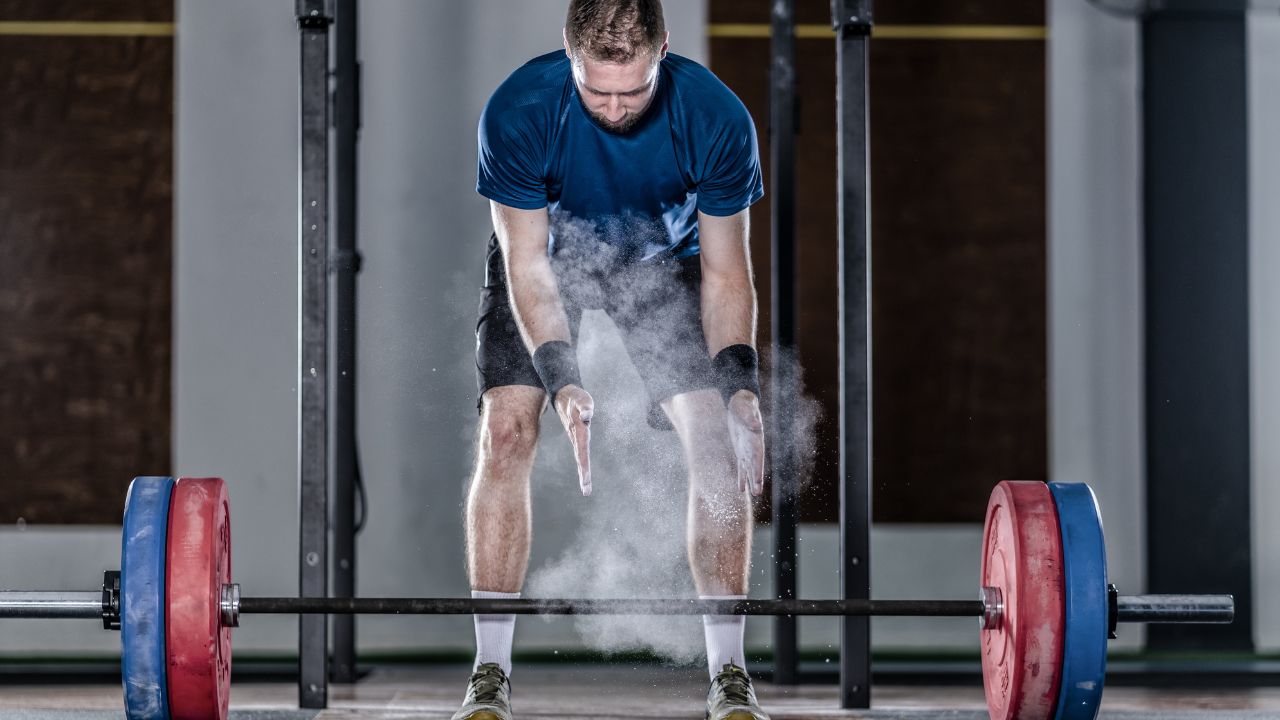Have you ever felt the fiery sensation in your muscles during a strenuous workout? That burning feeling, often accompanied by fatigue, is a common experience for many fitness enthusiasts. Why do muscles burn during exercise? This question has intrigued scientists and athletes alike for decades. This comprehensive guide delves deep into the mechanisms behind this phenomenon, exploring the science, physiology, and psychology behind the burning sensation in your muscles.
The Science Behind Muscle Burn
Unlocking the Mystery: Why Do Muscles Burn During Exercise We must first grasp the scientific principles governing muscle function to understand why muscles burn during exercise. During physical activity, your muscles undergo biochemical processes to generate energy. One crucial component of this energy production is the breakdown of adenosine triphosphate (ATP), the primary energy currency of cells. As ATP is utilized, it is broken down into adenosine diphosphate (ADP) and inorganic phosphate, releasing energy.
This energy release powers muscle contraction, allowing you to move and exert force. However, intense exercise can outpace the body’s ability to produce ATP, accumulating metabolic byproducts such as lactic acid and hydrogen ions. These byproducts contribute to your burning sensation during prolonged or high-intensity workouts.
Oxygen Debt and Muscle Burn
Unlocking the Mystery: Why Do Muscles Burn During Exercise Oxygen debt is another factor contributing to muscle burn, also known as excess post-exercise oxygen consumption (EPOC). When you engage in vigorous physical activity, your muscles require more oxygen to sustain energy production. However, during intense exercise, oxygen supply may lag behind demand, leading to a temporary deficit.
As a result, your muscles shift to anaerobic metabolism, relying on glycolysis to generate ATP without oxygen. This anaerobic process produces lactic acid as a byproduct, contributing to the burning sensation in your muscles. Additionally, accumulating metabolic waste products further exacerbates muscle fatigue and discomfort.
The Role of Muscle Fatigue
Muscle fatigue, often accompanied by a burning sensation, is a natural response to prolonged or intense physical exertion. When you push your muscles to their limits, they experience microtrauma and depletion of energy reserves, leading to temporary weakness and discomfort. This sensation of fatigue is your body’s way of signaling that your muscles need time to recover and adapt to the stress of exercise.
Fueling the Fire: Metabolic Pathways in Muscle Burn
Unlocking the Mystery: Why Do Muscles Burn During Exercise To sustain prolonged physical activity, your muscles rely on a complex interplay of metabolic pathways, including aerobic and anaerobic processes. Aerobic metabolism, fueled by oxygen, is the primary source of ATP during low to moderate-intensity exercise. In contrast, when oxygen availability is limited, anaerobic metabolism dominates during high-intensity efforts.
Muscle Burn and Endurance Training
Endurance training, such as long-distance running or cycling, can significantly impact why muscles burn during exercise. Through consistent training, your body adapts to the demands of prolonged activity by enhancing aerobic capacity, improving oxygen delivery to muscles, and increasing mitochondrial density. These adaptations enable your muscles to produce ATP more efficiently, reducing reliance on anaerobic metabolism and minimizing lactic acid buildup.
Pushing Through the Burn: Mental Strategies for Endurance
Endurance athletes often develop mental strategies to cope with the discomfort of muscle burn during prolonged exertion. Techniques such as positive self-talk, visualization, and goal setting can help athletes override sensations of fatigue and push through challenging moments. By focusing on mental toughness and resilience, athletes can harness the power of the mind to overcome physical limitations and achieve peak performance.
Understanding Muscle Burn: The Importance of Hydration
Unlocking the Mystery: Why Do Muscles Burn During Exercise Proper hydration is essential for optimal muscle function and performance during exercise. Dehydration can impair muscle contraction, decrease blood flow to working muscles, and hinder the removal of metabolic waste products, exacerbating the sensation of muscle burn. By maintaining adequate fluid intake before, during, and after exercise, athletes can support hydration levels and minimize the risk of muscle fatigue and discomfort.
Nutrition and Muscle Burn: Fueling Your Workouts
Nutrition plays a critical role in fueling your workouts and minimizing muscle burn. A balanced diet rich in carbohydrates, protein, and healthy fats provides your muscles the energy and nutrients to perform optimally. Carbohydrates are the primary fuel source for high-intensity exercise, while protein aids muscle repair and recovery. Additionally, adequate hydration and electrolyte balance are essential for maintaining muscle function and minimizing cramping and fatigue.
Overcoming Muscle Burn: Recovery Strategies
Adequate recovery is crucial for minimizing muscle burn and optimizing performance. Incorporating rest days, active recovery activities, and recovery modalities such as foam rolling, stretching, and massage can help alleviate muscle soreness and promote tissue repair. Additionally, prioritizing sleep and stress management are essential for supporting overall recovery and ensuring optimal muscle function during subsequent workouts.
Listening to Your Body: Recognizing Warning Signs
While some muscle burn is average during exercise, listening to your body and recognizing warning signs of overexertion or injury is essential. Persistent or severe muscle pain, weakness, or swelling may indicate underlying issues that require attention. Ignoring these warning signs can lead to further injury and hinder your progress toward your fitness goals. Consult a healthcare professional for guidance and support if you experience prolonged or intense discomfort during exercise.
Unlocking the Mystery: Why Do Muscles Burn During Exercise
Understanding why muscles burn during exercise is crucial for athletes seeking to enhance their performance and achieve their goals. By optimizing training strategies, nutrition, and recovery practices, athletes can minimize the impact of muscle burn and maximize their potential for success. Whether you’re a competitive athlete or a fitness enthusiast, embracing the burn and pushing your limits can significantly increase strength, endurance, and overall fitness.
Embracing the Burn: Finding Strength in Discomfort
While muscle burn may be uncomfortable, it’s also a sign that you’re challenging your body and pushing beyond your comfort zone. Embracing the burn can cultivate mental toughness, resilience, and a sense of accomplishment. Instead of viewing muscle burn as a barrier to overcome, see it as an opportunity for growth and improvement. By embracing discomfort and pushing through challenges, you’ll emerge physically and mentally stronger.
Muscle Burn and Motivation: Harnessing the Power Within
Muscle burn can be a powerful motivator, driving you to push harder and achieve your fitness goals. When you feel the heat building in your muscles, use it as fuel to propel yourself forward. Tap into your inner strength and determination, and channel the discomfort into a source of inspiration. Remember that the most significant achievements often arise from struggle and adversity. By embracing the burn and persevering through challenges, you’ll discover what you can accomplish.
Pushing Limits and Breaking Barriers

In pursuing excellence, athletes continually seek to push their limits and break through barriers. Muscle burn is just one of many obstacles they face along the way. By embracing the discomfort and going through the burn, athletes can unlock new levels of performance and achieve feats once thought impossible. Whether setting a new personal best, conquering a challenging race, or surpassing expectations, pushing limits is the hallmark of champions.
Fueling the Fire: Metabolic Pathways in Muscle Burn
To sustain prolonged physical activity, your muscles rely on a complex interplay of metabolic pathways, including aerobic and anaerobic processes. Aerobic metabolism, fueled by oxygen, is the primary source of ATP during low to moderate-intensity exercise. In contrast, when oxygen availability is limited, anaerobic metabolism dominates during high-intensity efforts.
During anaerobic metabolism, glucose is broken down through glycolysis to produce ATP, generating lactic acid as a byproduct. This rapid ATP production allows for short bursts of intense activity but also contributes to the burning sensation in your muscles. While aerobic metabolism is more efficient and sustainable, anaerobic metabolism plays a crucial role in powering explosive movements and overcoming resistance.
Understanding the balance between aerobic and anaerobic metabolism is critical to optimizing performance and managing muscle burn during exercise. By tailoring your training intensity and duration to target specific energy systems, you can enhance endurance, power, and overall fitness while minimizing discomfort and fatigue.
The Role of Hydration in Muscle Burn
Hydration is pivotal in muscle function and performance, particularly during prolonged or intense exercise. Water is essential for maintaining blood volume, regulating body temperature, and facilitating nutrient transport to working muscles. Dehydration can impair these vital functions, leading to decreased exercise capacity and increased susceptibility to muscle cramps and fatigue.
Electrolytes, such as sodium, potassium, and magnesium, also play a crucial role in hydration and muscle function. These minerals help maintain fluid balance, regulate nerve and muscle function, and support energy production. During prolonged exercise, electrolyte loss through sweat can exacerbate muscle burn and fatigue, highlighting the importance of replenishing fluids and electrolytes during and after workouts.
By prioritizing hydration before, during, and after exercise, athletes can support optimal muscle function, minimize the risk of dehydration-related issues, and enhance overall performance. Drinking water regularly throughout the day and consuming electrolyte-rich foods and beverages help maintain hydration levels and support peak athletic performance.
The Psychological Aspect of Muscle Burn
While the physical sensations of muscle burn are undeniable, the psychological aspect also plays a significant role in how we perceive and respond to discomfort during exercise. Our mindset, motivation, and perception of effort can influence our ability to tolerate and push through muscle burn.
For some athletes, muscle burn signals hard work and progress, motivating them to push beyond their limits and achieve their goals. These individuals embrace the discomfort as a necessary part of the journey toward improvement and growth. In contrast, others may perceive muscle burn as a barrier or limitation, leading to frustration or discouragement.
Developing mental strategies to cope with muscle burn can help athletes overcome psychological barriers and perform at their best. Techniques such as mindfulness, visualization, and goal setting can help shift your focus away from discomfort and toward the task. By cultivating a positive mindset and embracing the challenge, athletes can harness the power of their minds to push through muscle burn and achieve peak performance.
Muscle Burn and Training Adaptations
Contrary to popular belief, muscle burn isn’t always a sign of weakness or overexertion; it can also indicate positive training adaptations occurring within the body. When you challenge your muscles through resistance training or high-intensity exercise, you create microtears in the muscle fibers, triggering a process known as muscle hypertrophy.
As your muscles repair and rebuild more robust, they become more resistant to fatigue and capable of generating greater force. This process, known as the repeated about effect, enables athletes to tolerate higher training volumes and intensity levels over time without experiencing excessive muscle burn or soreness.
By gradually increasing training loads and allowing adequate recovery between sessions, athletes can stimulate muscle growth and adaptation while minimizing the risk of injury or overtraining. Embracing the discomfort of muscle burn as a sign of progress and adaptation can help athletes stay motivated and committed to their training goals.
Muscle Burn and Endorphin Release
Despite its uncomfortable nature, muscle burn is often accompanied by a sense of euphoria or “runner’s high” attributed to the release of endorphins, neurotransmitters that act as natural painkillers and mood enhancers. Endorphins are released in response to physical exertion and stress, helping alleviate discomfort and promote well-being and relaxation.
The endorphin release associated with muscle burn can contribute to a positive exercise experience, making workouts more enjoyable and rewarding. This phenomenon may explain why many athletes and fitness enthusiasts continue to pursue challenging activities despite the discomfort they may experience.
Unlocking the Mystery: Why Do Muscles Burn During Exercise? By focusing on the euphoria and accomplishment associated with endorphin release, athletes can reframe their perception of muscle burn and find greater enjoyment and satisfaction in their training sessions. Embracing the holistic benefits of exercise, including improved mood and mental health, can help athletes stay motivated and committed to their fitness journey.
Conclusion
The Burn That Ignites GreatnessIn conclusion, the burning sensation in your muscles during exercise is a complex interplay of physiological, metabolic, and psychological factors. Understanding why muscles burn during exercise can empower you to optimize your training, nutrition, and recovery practices for peak performance. Instead of shying away from the burn, embrace it as a sign of progress and growth. By pushing through discomfort and embracing challenges, you’ll unlock your full potential and ignite the flames of greatness within.




